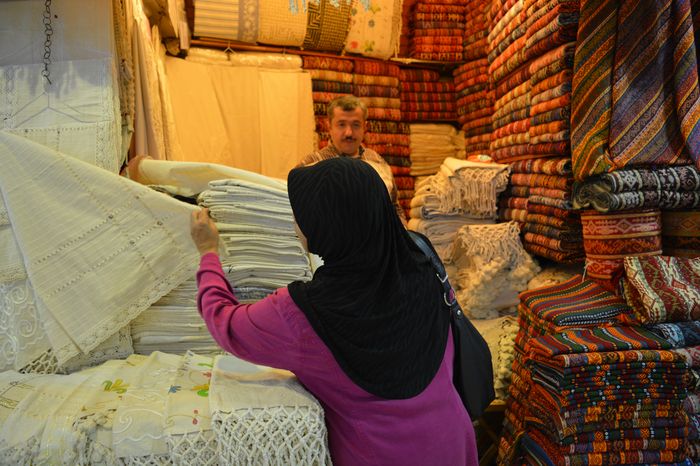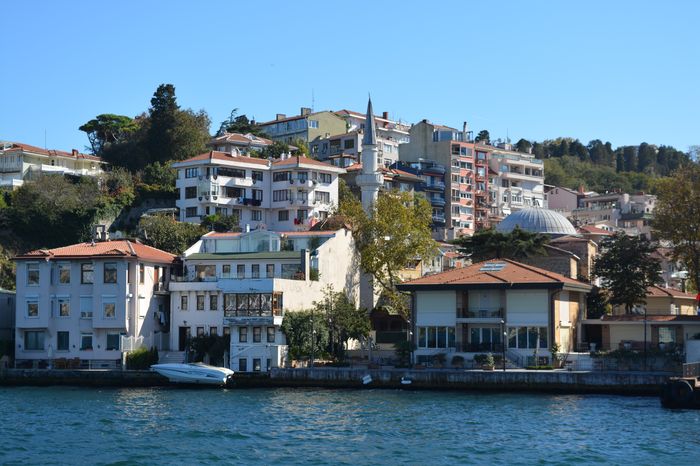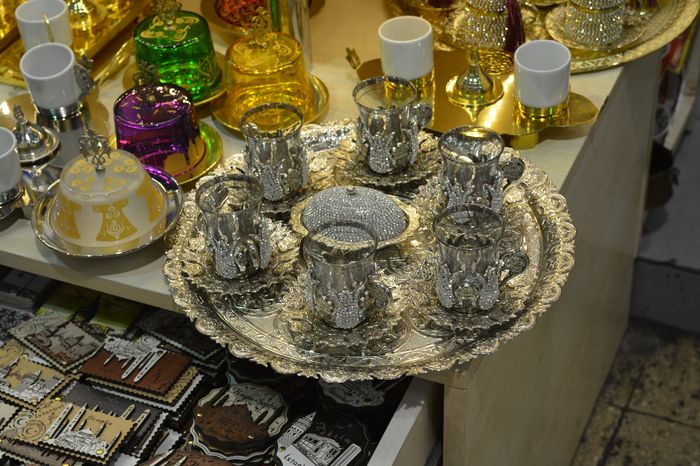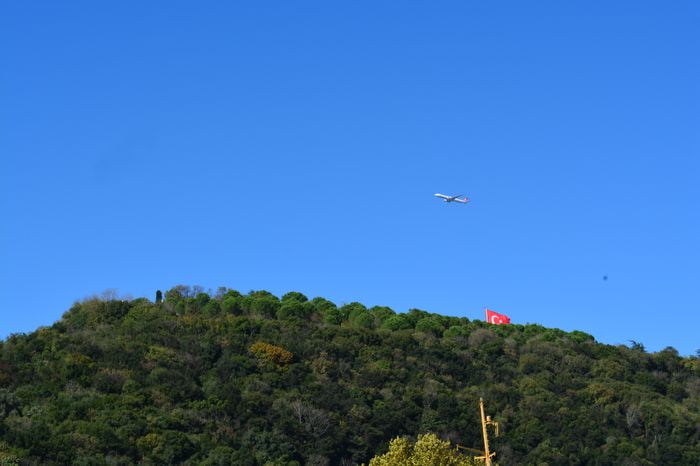The Oriental love of splendour is shown in the piling up of domes and still more in facing the walls with slabs of marble, in mosaics (either opus sectile, small pieces, or opus Alexandrinum, large slabs cut in suitable shapes), in gold and colour decorations, and in the many-coloured marbles of the columns and other architectural details. Nothing, however, seems to betray the essentially Oriental character of Byzantine architecture so much as the absence of work in the higher forms of sculpture, and the transformation of high into low decoration by means of interwoven traceries, in which the chiselled ornaments became flatter, more linear, andlacelike. Besides the vestibules which originally surrounded St. Sophia, the columns with their capitals recall the antique.
These columns almost invariably supported arches instead of the architrave and were, for that reason, reinforced by a block of stone (impost block) placed on top and shaped to conform to the arch, as may frequently be seen at Ravenna. Gradually, however, the capital itself was cut to the broader form of a truncated square pyramid, as in St. Sophia. The capitals are at times quite bare, when they serve at the same time as imposts or intermediate supporting blocks, at other times they are marked with monograms or covered with a network ofcarving, the latter transforming them into basketlike capitals. Flat ornamentations of flowers and animals are also found, or leaves arbitrarily arranged. Much of this reminds one of the Romanesque style, but the details are done more carefully.
Renovated church of the Apostles and the church of St. Sergius
The fortress like character of the church buildings, the sharp expression of the constructive forms, the squatty appearance of the domes , the bare grouping of many parts instead of their organic connection — these are all more in accordance with the coarser work of the later period than with the elegance of the Greek.
Two other types of Justinian’s time are presented by the renovated church of the Apostles and the church of St. Sergius and Bacchus. Both churches are in the capital. The latter somewhat resembles S. Vitale in Ravenna. It is a dome-crowned octagon with an exterior aisle. The former church (now destroyed) was built on the plan of a Greek Cross (with four equal arms) with a dome over the crossing and one over each arm.
During the period of the Macedonian emperors, Basil I (867-886) and Leo VI (886-912), an upward trend in politics, literature, and art set in. The Greek basilica, which is a lengthened structure, barrel-vaulted and provided with one or more domes, is also widely represented in this period, while the western form of basilica, with the wooden ceiling, is completely discarded.
Read More about Paul the Silentiary – the Magnificence of Hagia Sophia








